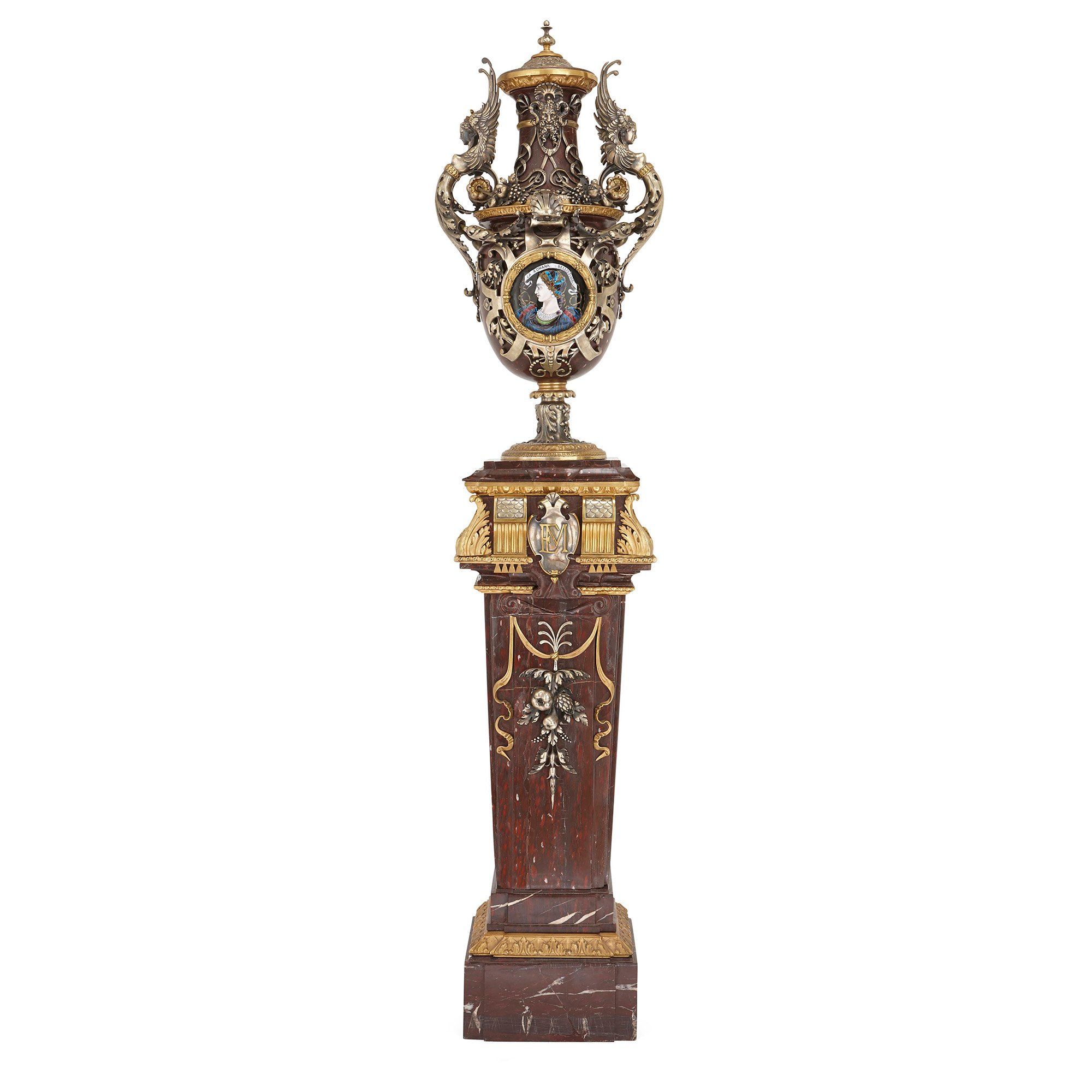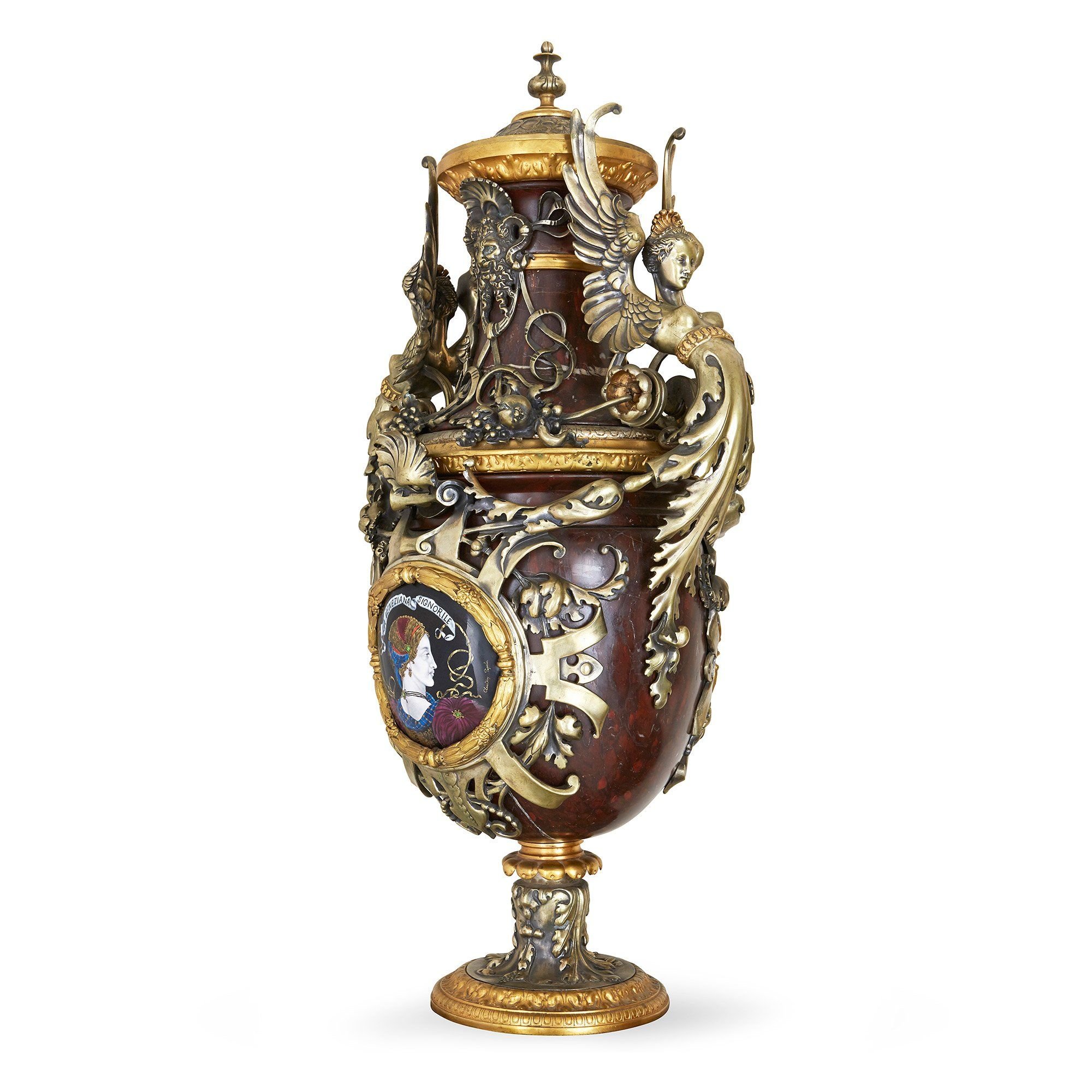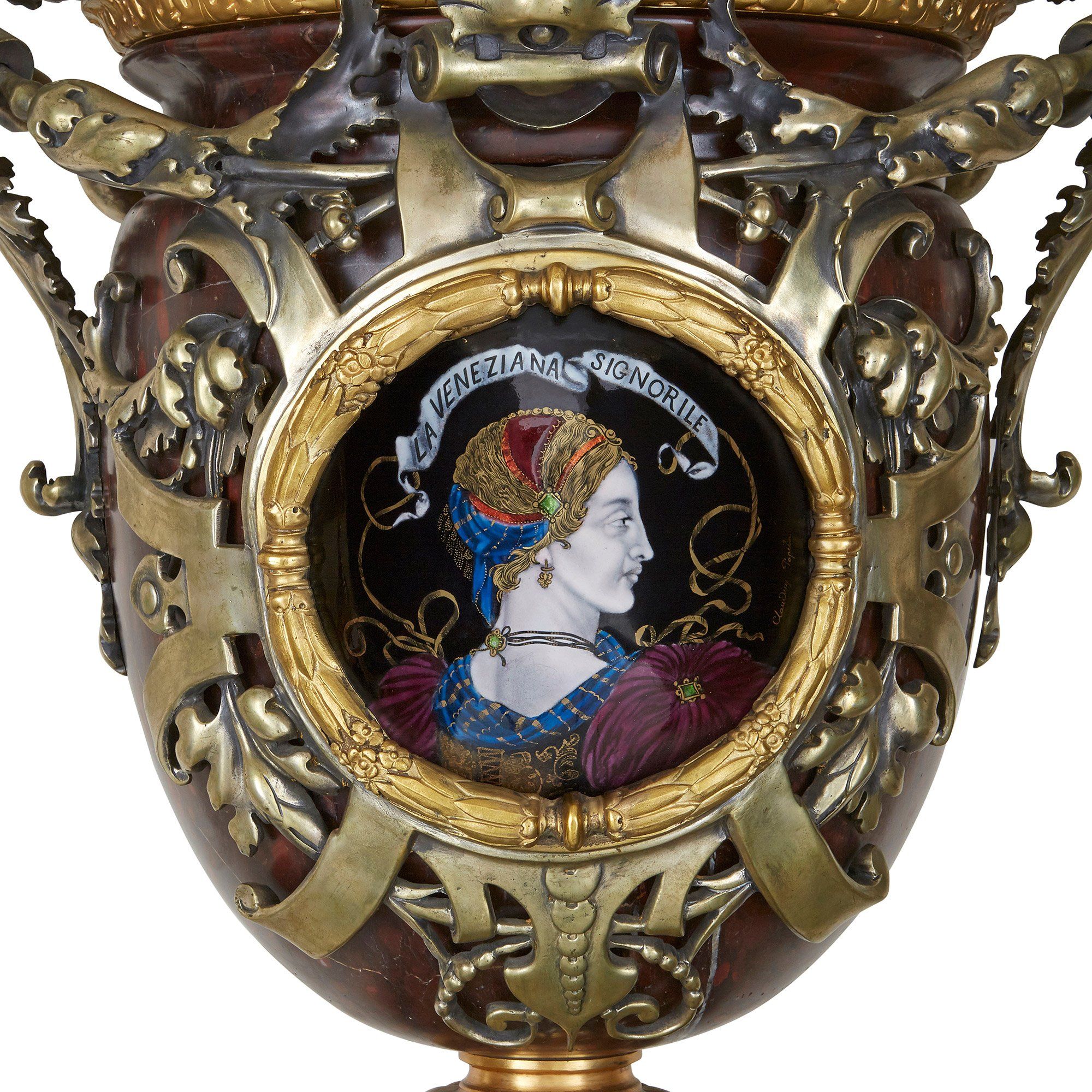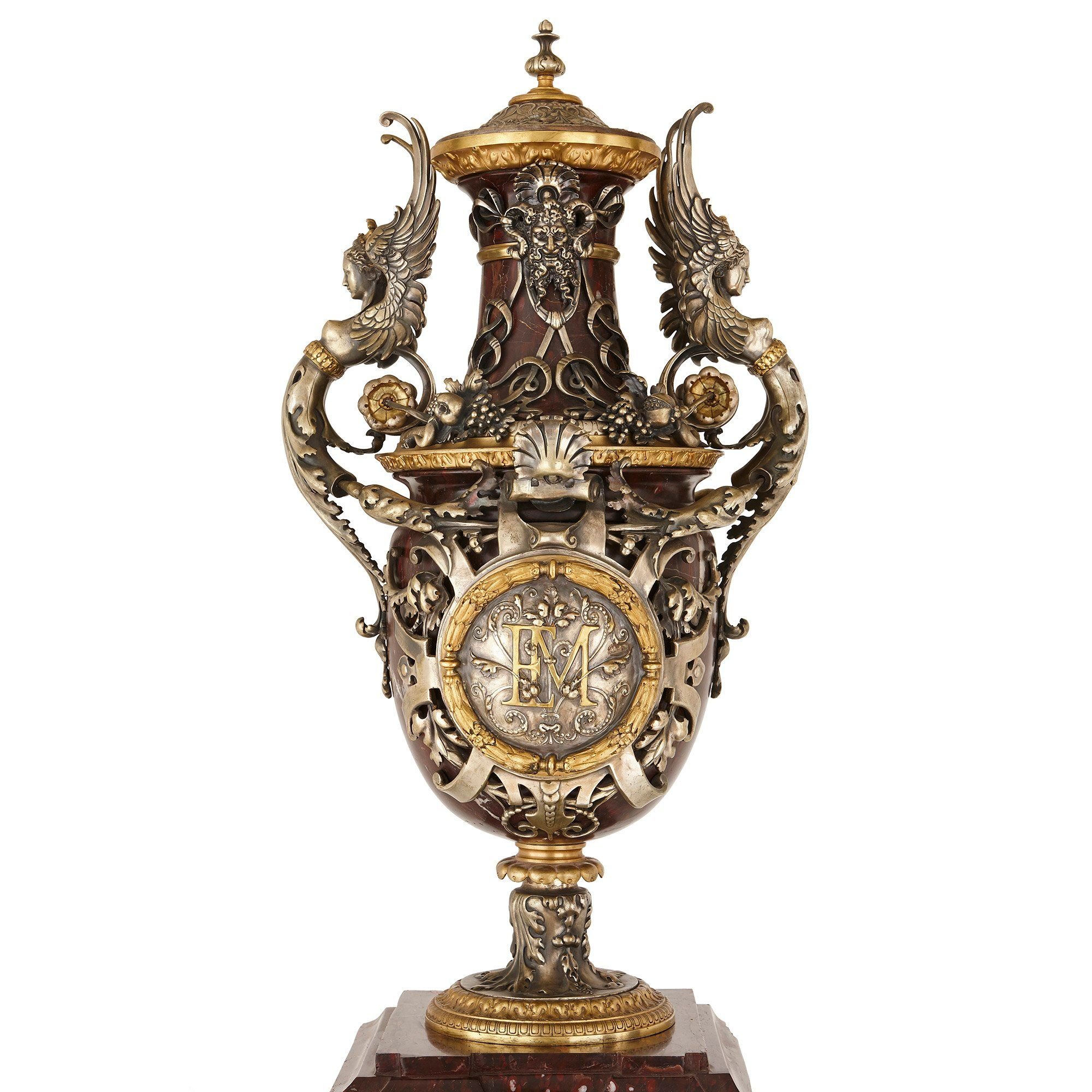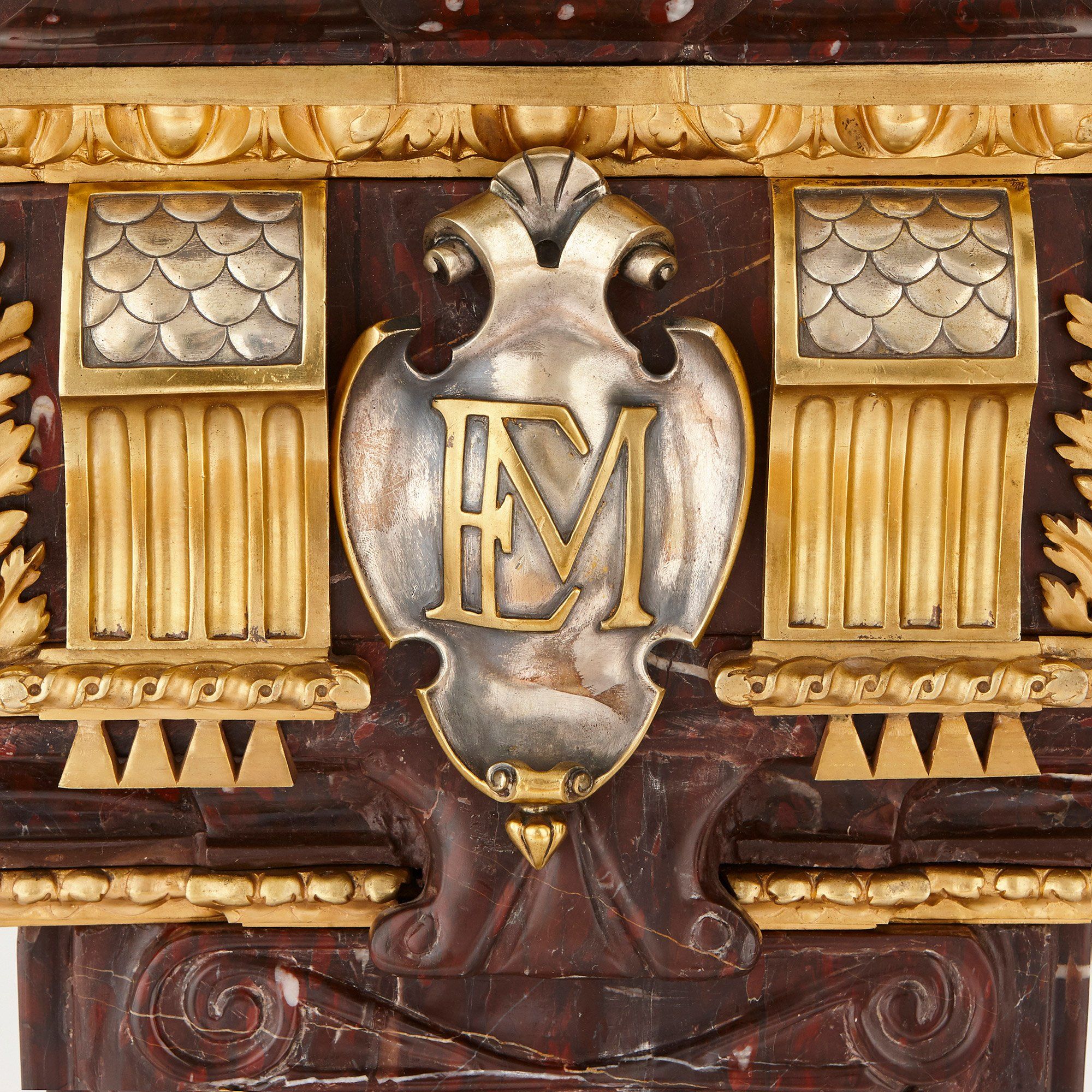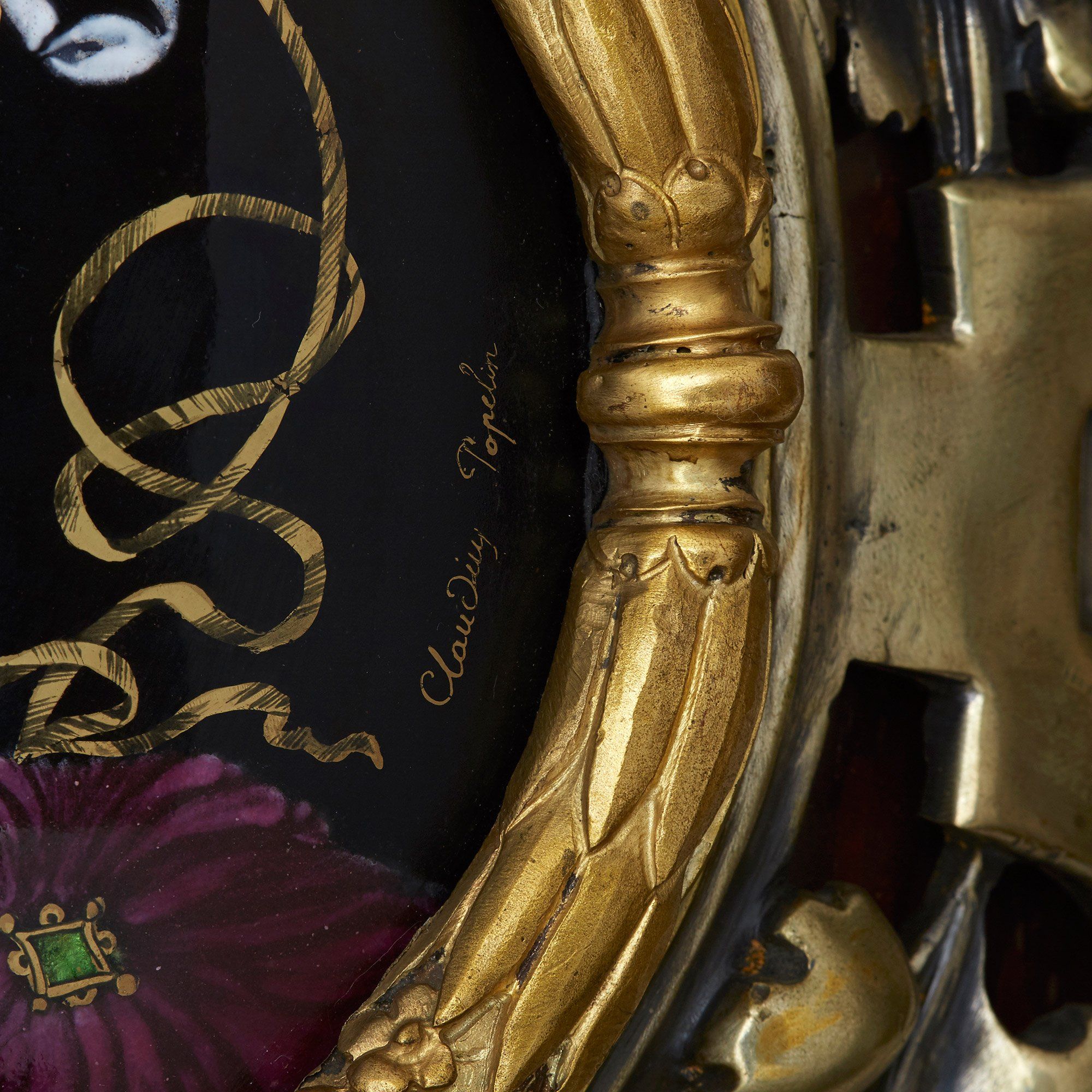This pair of vases and their pedestals are a result of a collaboration between three of the greatest French decorative artists of the late 19th Century: the great bronzier Ferdinand Barbedienne, the master designer Louis-Constant Sévin, and the leading enameller Claudius Popelin.
The collaboration has been dated to the year 1867, at the height of the Second Empire in France under its charismatic leader Napoleon III. The period was marked, in the decorative arts, by a renewed interest in Classical motifs, a flourishing of the revived Neo-Grec style, and a focus on opulence, luxury, and ornamentation.
The vases and pedestals have been built—based on a design by Sévin, the chief modeller at Maison Barbedienne—in rouge griotte marble. ‘Griotte’ is a French word for a Morello cherry, and griotte marble is a particularly fine kind of deep-red, cherry-coloured stone, used in palaces, museums, and luxury interiors around the world.
The lidded vases feature exquisite gilt and silvered bronze mounts, which beautifully contrast with each other. Each vase is mounted at the side with silvered bronze winged caryatids, the name for Classical female figures used as architectural features, each of which is attached to further silvered bronze mounts which take the form of stylised acanthus leaves, flowers, shells, bunches of grapes, Classical masks, and medallions. As well as silvered bronze, there are gilt bronze highlights around the circular base, body, rim, and lid of each vase, and each vase is surmounted by a finial.
The pedestals are decorated similarly, with gilt and silvered bronze Classical details including a hanging bunch of fruit on the front of each one.
The finest and most significant features of the vases, however, are the plaques which sit on the centre of the vases’ bodies. The reverse side of each vase contains a silvered and gilt bronze plaque containing the monogram ‘EM’, while the front side contains an enamel portrait roundel of a woman, signed ‘Claudius Popelin’ and set inside a circular gilt bronze laurel frame.
One enamel plaque is titled ‘LA VENEZIA SIGNORILE’ (The Venetian Lady) and the other depicts ‘LA ROMANA BELLISSIMA’ (The Roman Beauty). The portraits are created in the style of French enamel of the Renaissance period, in particular the Limoges enamellers of the 16th and 17th Centuries. The town of Limoges in France was the leading centre of decorative enamel production during the Renaissance.
Indeed, Limoges was such an inspiration on Claudius Popelin that he decided to take up enamelling from around 1860, having begun his career as a painter of history scenes. He achieved such high distinction in the medium that he was regularly invited to the Salon of Princess Mathilde Bonaparte, the cousin of Emperor Napoleon III, and was eventually commissioned to create an enamel portrait plaque of Napoleon himself, which is now in the Musee d’Orsay.
It is thought, but not recorded in the documentary evidence, that these vases and pedestals were exhibited at the 1867 Exposition Universelle (World’s Fair) in Paris. It is also thought that once displayed in Paris, the vases were bought by the American manufacturing and banking tycoon John T. Martin (1816-1897).
The vases are next recorded as part of John T. Martin’s collection at his house on Pierrepont Street in New York.
Vases: Height 91.5 cm, width 48.5cm, depth 39cm
Pedestals: Height 120cm, width 40.5cm, depth 34cm






